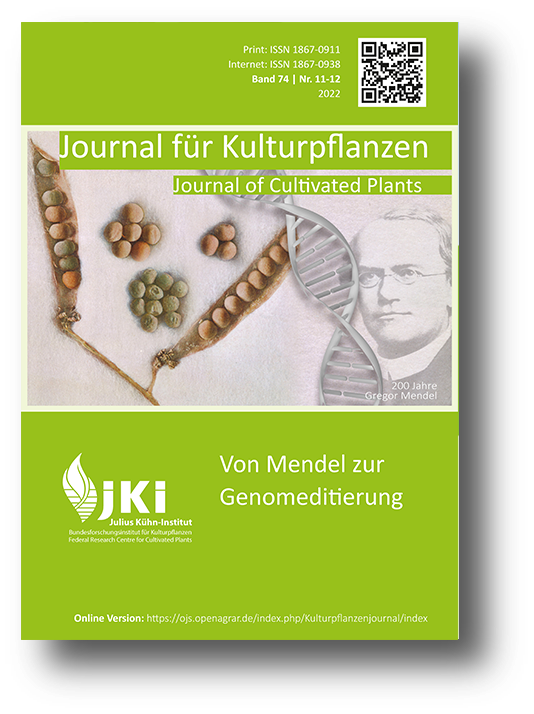Mendel’s Laws and their impact on plant breeding
DOI:
https://doi.org/10.5073/JfK.2022.11-12.02Keywords:
genetics, genotype, haploids, inheritance, Mendel´s law, monogenic traits, phenotype, plant breeding, polygenic traits, polyploidy, quantitative traitsAbstract
Cereals like wheat, rice, maize, barley and millets, feed the world. Therefore, global breeding activities, which had been very successful during the last decades, aim at an increase of cereal yields. This, as expected continued success story is the result of the extensive observations and formulation of the fundamental genetic rules that bear his name as Mendel’s law of inheritance (T.H. Morgan 1911). Mendel’s thinking in “heritable characters“ resembling structural “genes“, was the basis for a better understanding of the genetic principles of inheritance; The application of these principles in systematic plant breeding has then allowed the continuous development of improved cultivars.
Plant characteristics controlled by a few or only one gene were the first candidates for improvement since they allowed the direct application of Mendel’s rules. Typical examples are resistances against diseases, e.g. due to fungal pathogens or viruses. Today, most of the wheat and barley cultivars grown in Europe are resistant to many diseases. The discovery of resistance of barley against soil-borne barley yellow mosaic virus disease and the clarification of its genetic control is an impressive example for the direct application of Mendel’s law. The respective extensive research was the basis for developing a multitude of resistant barley varieties during recent decades. Numerous further examples for resistance of crop plants against pathogens could be mentioned, here. Such “Mendel genes" can be genetically marked and localized, which subsequently enables marker-assisted selection. They were also among the first to be isolated. Isolated genes are the basis to apply new breeding technologies, e.g. CRISPR/Cas, and to transfer the respective genes to other varieties, species or taxa with the help of biotechnological tools.
Due to the obviously increasing effects of climate change, it will be necessary in the future to breed new varieties with higher tolerance to abiotic stress – such as heat and drought. Such traits are usually not controlled by one or a few genes; rather, they are polygenically inherited and therefore show a typical quantitative distribution of respective traits. This also applies to crop yield and relevant quality traits. New approaches have been developed for breeding and improving such complex traits e.g. QTL analyses separating complex traits into several Mendelian loci explaining part of the variance observed and „genomic selection" are widely applied today. In this process, suitable genotypes are examined for genetic variation that indicates a desired trait expression (phenotype). In this way, a continuous optimisation of methodology takes place in today's knowledge-based plant breeding on the basis of Mendel's rules via empirical (“classical") methodology. This will be the cornerstone to improve the yield potential, yield stability and quality of plants in the future.
Published
Issue
Section
License
Copyright (c) 2022 Wolfgang Friedt, Frank Ordon

This work is licensed under a Creative Commons Attribution 4.0 International License.
The content of the journal is licensed under the Creative Commons Attribution 4.0 License. Any user is free to share and adapt (remix, transform, build upon) the content as long as the original publication is attributed (authors, title, year, journal, issue, pages).
The copyright of the published work remains with the authors. The authors grant the Journal of Cultivated Plants, the Julius Kühn-Institut and the OpenAgrar repository the non-exclusive right to distribute and exploit the work.







